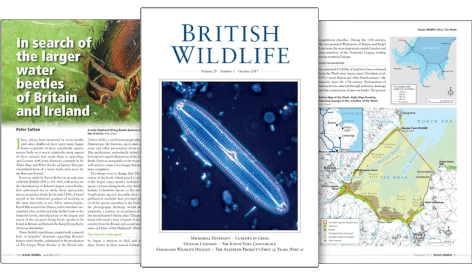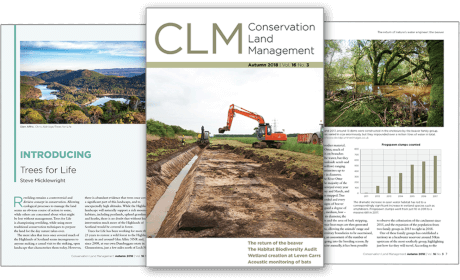By
Leon (NHBS Catalogue Editor)
15 Nov 2021
Written for Hardback

Deep time is one of the most mind-boggling yet underappreciated concepts to come out of the disciplines of evolutionary biology and the earth sciences. As an editor with
Nature for over three decades, Henry Gee has had a front-row seat to numerous exciting scientific developments that have enriched our understanding of Earth's vast history. This high-octane popular science book is his take on the genre of the "earth biography".
I admit that my initial response to this book was one of mild surprise: "wait, another one?"
A (Very) Short History of Life On Earth was published in the same month as Riley Black's
Deep Time and only months after Andrew Knoll's
A Brief History of Earth that promises to do the whole exercise in eight chapters. Further back, other notable examples have been Robert Hazen's
The Story of Earth and the now-classic
Life: An Unauthorised Biography by Richard Fortey. Writing Earth's biography almost seems like a rite of passage for science writers.
If you have read any of these books, or are familiar with the major events in life's evolution, you already know what to expect. Earth's formation, the start of plate tectonics, the rapid evolution of life, the Great Oxygenation Event, the first bacterial cells, endosymbiosis, multicellular life, the spinal cord, tetrapods making landfall, reptiles, dinosaurs, mammals, monkeys, and mankind – the whole circus comes rolling through town in high tempo.
And yet, the history of life is so full and rich that every iteration of this story can draw on new details. An important backbone to Gee's version is plate tectonics and the supercontinent cycle. As he explains, the breakup of Rodinia (Pangaea's predecessor) was accompanied by so much volcanism and extrusion of fresh rocks that the subsequent erosion drew enough carbon dioxide out of the atmosphere to cause planetary-scale glaciation. More recently, the opening of the Drake Passage allowed the Southern Ocean to flow uninterruptedly around Antarctica, shaping Earth's climate to this day.
What I particularly enjoyed is that Gee focuses on those geologic periods and fauna that normally get little love in popular science books. There was the invertebrate fauna of the Ediacaran that defies categorization and makes even the weirdos of the Cambrian explosion look normal in comparison. Gee is similarly knowledgeable about the rise of the backbone and introduces you to vetulicolians and yunnanozoans, one of which,
Cathaymyrus, "looked like an anchovy fillet [...] sans head, sans scales, sans ears, sans nose, sans brain – sans nearly everything" (p. 38). He introduces you to the fantastic flora of the Carboniferous, and the unique conditions that gave rise to 90% of today's coal reserves. And he sticks up for the fauna of the Triassic that often gets overlooked in favour of the dinosaurs.
Indeed, when he gets to the dinosaurs, Gee cleverly refrains from trying to write an overview, as so many excellent books already exist on this topic. Instead, he focuses on several biological aspects that made them so successful: the evolution of bipedalism, the innovations in respiration that allowed them to grow so large, and the transition to powered flight. This is embedded in the history of mammal evolution that simultaneously happened in the background, though I was surprised to find no mention of Panciroli's
Beasts Before Us, which is the current go-to book on this topic.
Some other enjoyable details include an increasingly zoomed-in timeline at the beginning of some chapters – too few books use good infographics. Gee's extensive footnotes are frequently as interesting as the main text, provide plenty of further references, and clearly signpost where he ventures into speculation. Some of his writing is particularly memorable. Of the first cells, he writes that: "These foamy lathers of soap-bubble cells stood as tiny clenched fists, defiant against the lifeless world" (p. 7), while the evolution of photosynthesis that harnessed previously damaging UV radiation meant that "harm had become harvest" (p. 8).
Importantly, Gee repeatedly reminds his readers that evolution is not goal-directed. "It wasn't as if eukaryotes looked at their calendars, and, seeing that it was 825 million years ago, unanimously decided to become multicellular" (p. 217). Furthermore, "the tetrapod commitment to land was, for many millions of years, no more than equivocal" (p. 68). Both early and modern birds have secondarily lost flight on numerous occasions, while one group of ungulates "with enthusiasm, and, in evolutionary terms, great haste" (p. 141) returned to the water and evolved into whales. There is one place where Gee seemingly throws this caution to the wind: "Dinosaurs had always been built to fly" (p. 105) and "[...] spent millions of years accumulating everything they needed for flight" (p. 113). In hindsight, it seems the writing was on the wall, but I was reminded of Neil Shubin's insight that: "innovations never come about during the great transitions they are associated with".
The first two-thirds of
A (Very) Short History of Life On Earth are, in my view, the strongest. After the end of the Cretaceous, the book takes a rather anthropocentric bend, focusing on primate and hominin evolution only, as if life was on the highway to humankind. What, for example, of the explosive radiation of birds? Gee also stops rather abruptly with our departure from Africa and our interbreeding with Neanderthals and Denisovans. Recent milestones, such as language, animal and plant domestication, and agriculture are skipped over.
Instead, in his last chapter, Gee looks ahead with an unusual mix of optimism and nihilism. In an upbeat manner, he writes that we are already phasing out fossil fuels and can expect our world population to plateau. Part of his optimism might stem from his agreement with e.g. Michael Hannah that technically it is too early to be speaking of the sixth mass extinction. On the other hand, he thinks our extinction is merely a matter of thousands of years. When he reflects on the long-term future of Earth, he asks: "What, then, will be the human legacy? When measured against the span of life on Earth – nothing". Ours is but a "mayfly existence" (p. 232-233). This reminder of our cosmic insignificance is a sobering but fitting conclusion to Gee's epic tale.
In 1997, Ted Nield wrote of Fortey's book that "The tale of life needs constant retelling". I believe this sentiment still holds, both because our understanding advances and because we need periodic reminders of the importance of deep time. Gee succeeds on both these fronts and dishes out interesting nuggets at a brisk clip, making
A (Very) Short History of Life On Earth a high-octane popular science book.























![Kame no Kōra wa Abarabone: Jintai de Arawasu Ugokumonozukan [Turtle Shells Have Ribs: A Picture Book of Animal Anatomy Represented by the Human Body]](http://mediacdn.nhbs.com/jackets/jackets_resizer_medium/24/249897.jpg?height=150&width=99)











